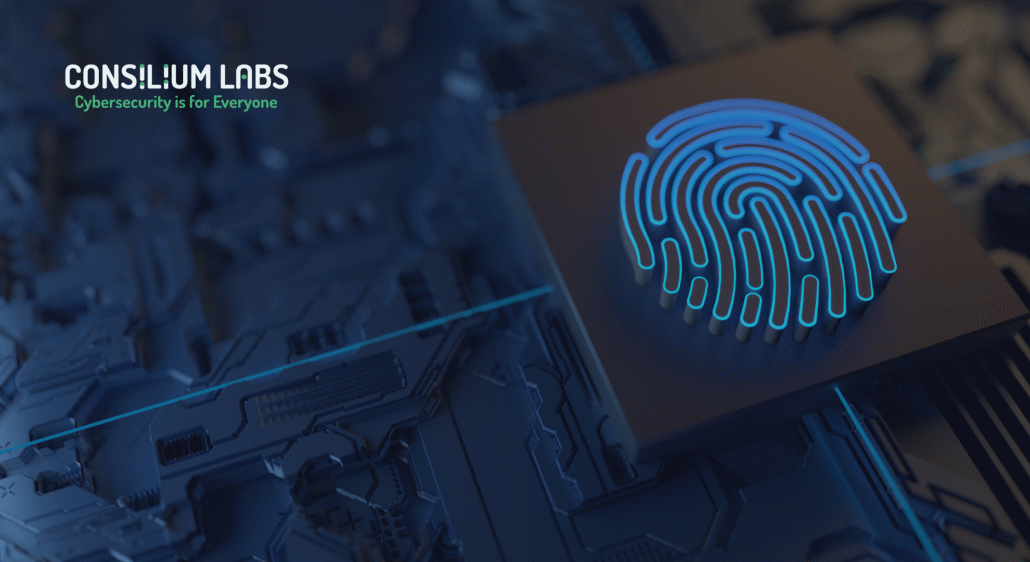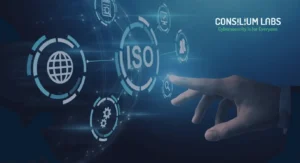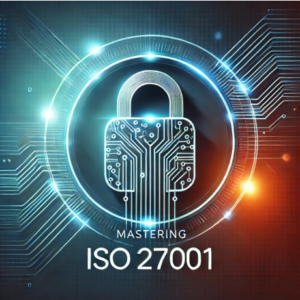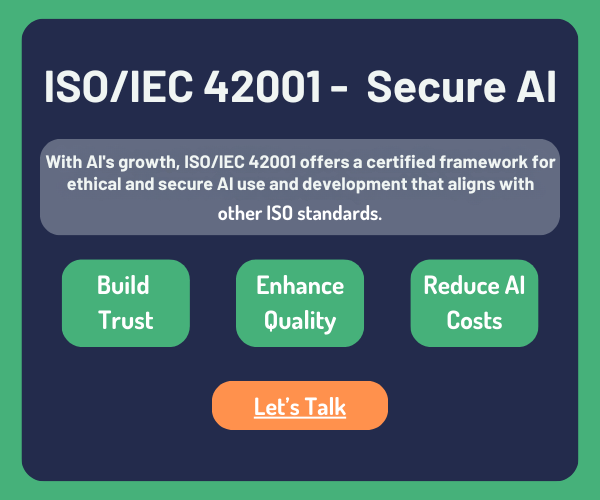ISO 42001 or SOC 2? How to Choose the Best AI Compliance Path
- Shaheer Tariq

Understand the key differences, overlaps, and when to pursue one or both.
As artificial intelligence becomes central to product innovation, trust and compliance become critical differentiators. Two major frameworks now shape how AI companies demonstrate governance: ISO/IEC 42001, the world’s first standard for AI Management Systems, and SOC 2, a widely adopted framework for service organization controls.
But which one should AI-driven companies adopt—and when does it make sense to pursue both?
In this article, we break down the strategic, operational, and compliance trade-offs between ISO 42001 and SOC 2, helping you choose a pathway aligned with your risk profile, client expectations, and business model.
In This Article
- What ISO 42001 and SOC 2 are designed to do
- Core differences between the two frameworks
- When ISO 42001 is more appropriate
- When SOC 2 is more appropriate
- When to adopt both together
- Final considerations for AI-native businesses
ISO 42001 establishes an AI Management System (AIMS) focused on:
- Ethical AI principles (fairness, transparency, oversight)
- Governance of the full AI lifecycle
- Risk and impact assessments specific to AI use cases
- Internal policies, controls, and continuous improvement
SOC 2, developed by the AICPA, is an audit report focused on five Trust Services Criteria:
- Security
- Availability
- Processing Integrity
- Confidentiality
- Privacy
It’s often required in vendor due diligence processes, especially for SaaS companies working with U.S.-based enterprise clients.
Step 1: Define AI Use Cases and Boundaries
Map all AI systems across your organization:
- What is the system’s function and scope?
- Who is affected by its outputs?
- What data, models, and vendors are involved?
This scoping step anchors your risk evaluation and ensures accurate mapping to Annex A controls.
Step 2: Assess Impact Across Risk Categories
Use a risk matrix to evaluate likelihood and impact:
- User harm (bias, discrimination, misinformation)
- Legal exposure (fines, lawsuits, compliance failure)
- Operational failure (downtime, model error)
- Reputation loss (loss of trust, brand damage)
Assign owners, document risks, and quantify the potential consequences.
Step 3: Apply Mitigation Using ISO 42001 Controls
Map identified risks to Annex A controls. Examples:
Risk | Control | Strategy |
Gender bias in recruitment AI | A.7.2 Fairness | Retrain with balanced data, validate outcome equity |
Poor explainability in loan AI | A.6.1 Oversight, A.7.3 Explainability | Introduce interpretable models + override policies |
Privacy gaps in chatbots | A.7.4 Data Security, A.5.4 Risk Controls | Anonymize inputs, monitor for data leakage |
🛠 Tip: Assign ownership. Record how each control will be implemented, validated, and maintained.
Step 4: Document the Risk Assessment
ISO 42001 requires audit-ready documentation, including:
- A formal risk register
- Justification for each applied (or excluded) control
- Evaluation of residual risk
- Links to evidence (e.g., logs, validation reports, policies)
This becomes the backbone of your AI audit and certification package.
Step 5: Review & Update Continuously
AI risk is dynamic. ISO 42001 encourages ongoing reassessment:
- New system deployments
- Model retraining or data changes
- Changes in law or industry regulation
Embed reviews into your AIMS lifecycle and schedule quarterly or semiannual assessments (NIST, 2023).
In today’s world, cybersecurity and Infosec (Information Security) are crucial. ISO 27001 helps organizations minimize the risk of data breaches, comply with regulations, and build trust with customers. The standard focuses on both preventing risks and improving your systems over time.
Aspect | ISO 42001 | SOC 2 |
Focus | AI governance, ethics, transparency | Data security and operational controls |
Scope | Organization-wide AI systems | Specific to systems and services evaluated |
Standard Type | International certification (ISO) | Independent attestation report (AICPA) |
Control Framework | Annex A controls tailored to AI | Controls mapped to Trust Services Criteria |
Applicability | AI developers, deployers, and users | Cloud, SaaS, and service providers |
Audit Requirement | Certification body audit | CPA firm audit |
Use Case | AI accountability, responsible design | Customer assurance, vendor onboarding |
- You build or deploy high-impact AI systems (e.g., healthtech, fintech, HR tech)
- Clients or regulators expect explainability and ethical safeguards
- You need a structured way to govern AI risk, bias, oversight, or data usage
- You’re preparing for alignment with the EU AI Act, NIST AI RMF, or ISO 27001
It demonstrates maturity in handling AI-specific risks—from model drift to stakeholder harm.
SOC 2 is often the default when:
- You’re a SaaS provider entering U.S. enterprise markets
- Your clients require SOC 2 Type II reports for procurement
- You’re focused on showing data protection and operational controls
- You want a familiar framework for customer-facing trust programs
It’s especially useful in sales pipelines and procurement due diligence.
For AI-native companies offering cloud-based AI products, both standards serve distinct but complementary purposes:
- SOC 2: Reassures clients about how your systems protect their data
- ISO 42001: Shows how your AI outputs are governed, ethical, and transparent
Adopting both:
- Enhances multi-jurisdictional compliance readiness
- Increases competitiveness in both regulated and procurement-heavy markets
- Enables alignment with ISO 27001 and ISO 27701 for a full GRC stack
ISO 42001 and SOC 2 are not mutually exclusive. Each plays a role in shaping trust—whether in AI ethics or data security. The right decision depends on:
- Who your clients are
- How AI is embedded in your services
- What risks you must govern
📩 Need help choosing or implementing the right frameworks? At Consilium Labs, we help AI-first companies navigate ISO 42001, SOC 2, and beyond—with tailored readiness assessments, audit prep, and scalable governance systems.
Related Articles
Let's get in touch
Start your audit now. Achieving cybersecurity audit can be complex. We have made it our mission to simplify the process, giving you access to the professional expertise you need to prepare your company for the future. Get in touch with us today!





